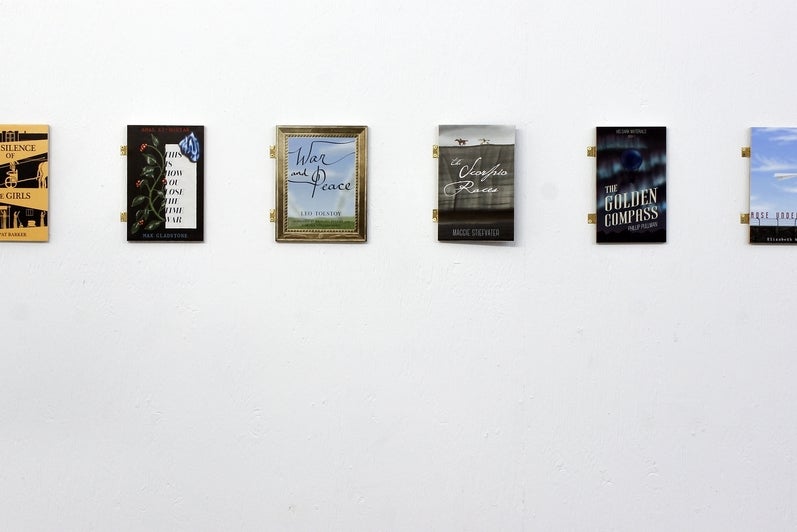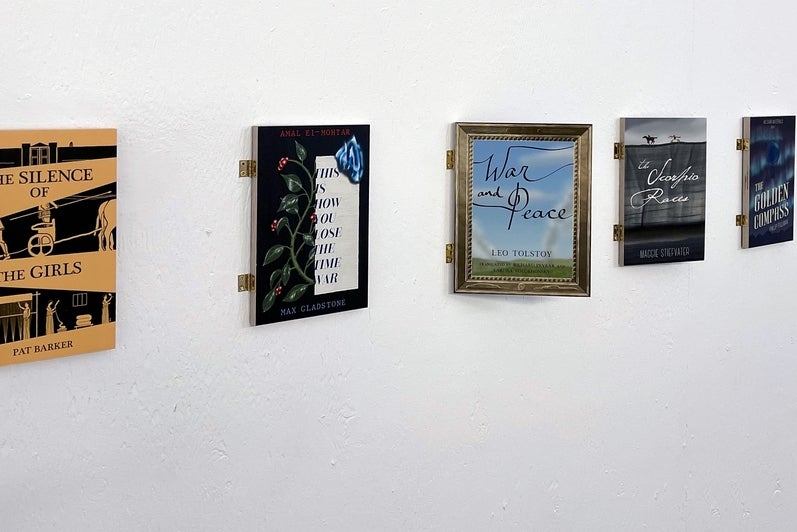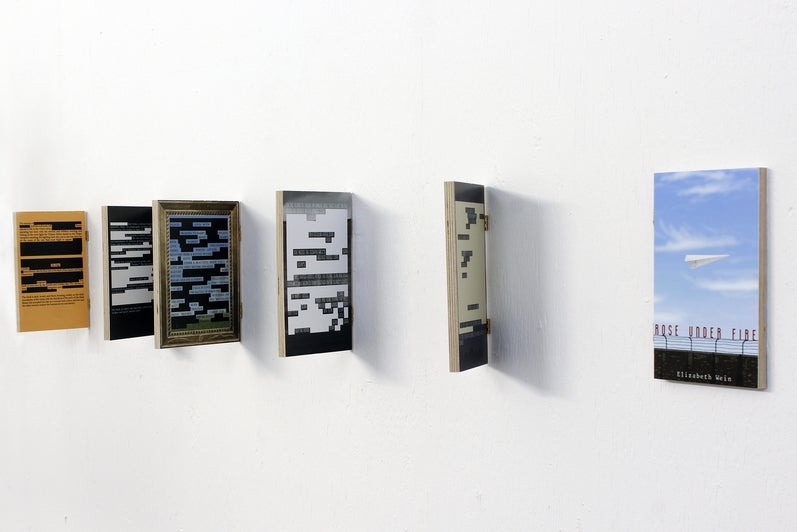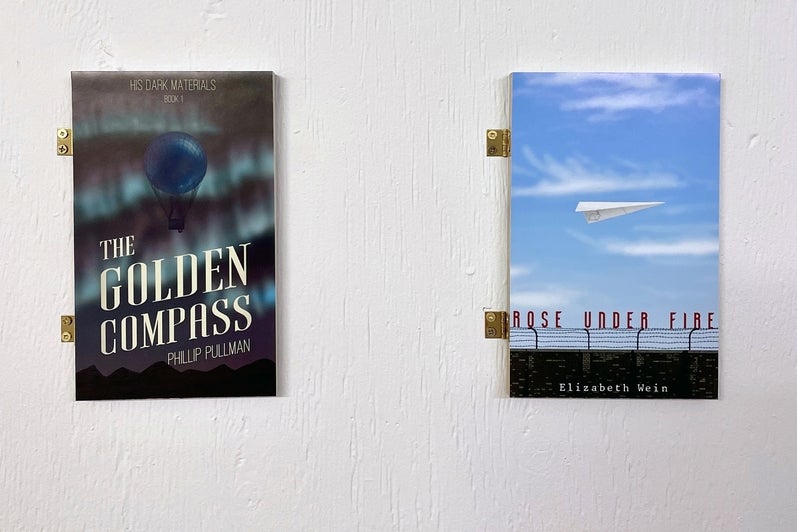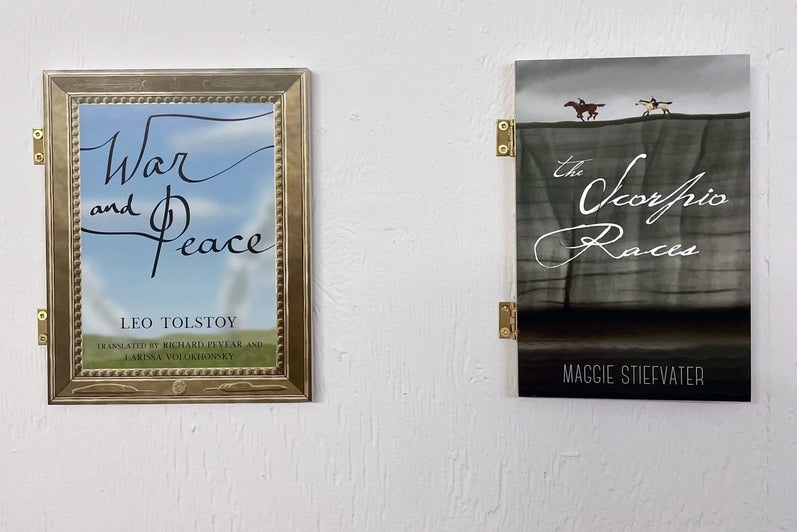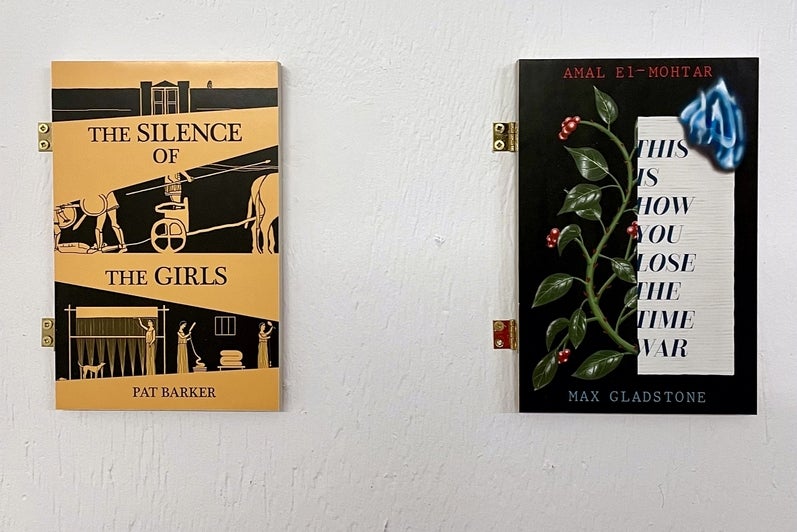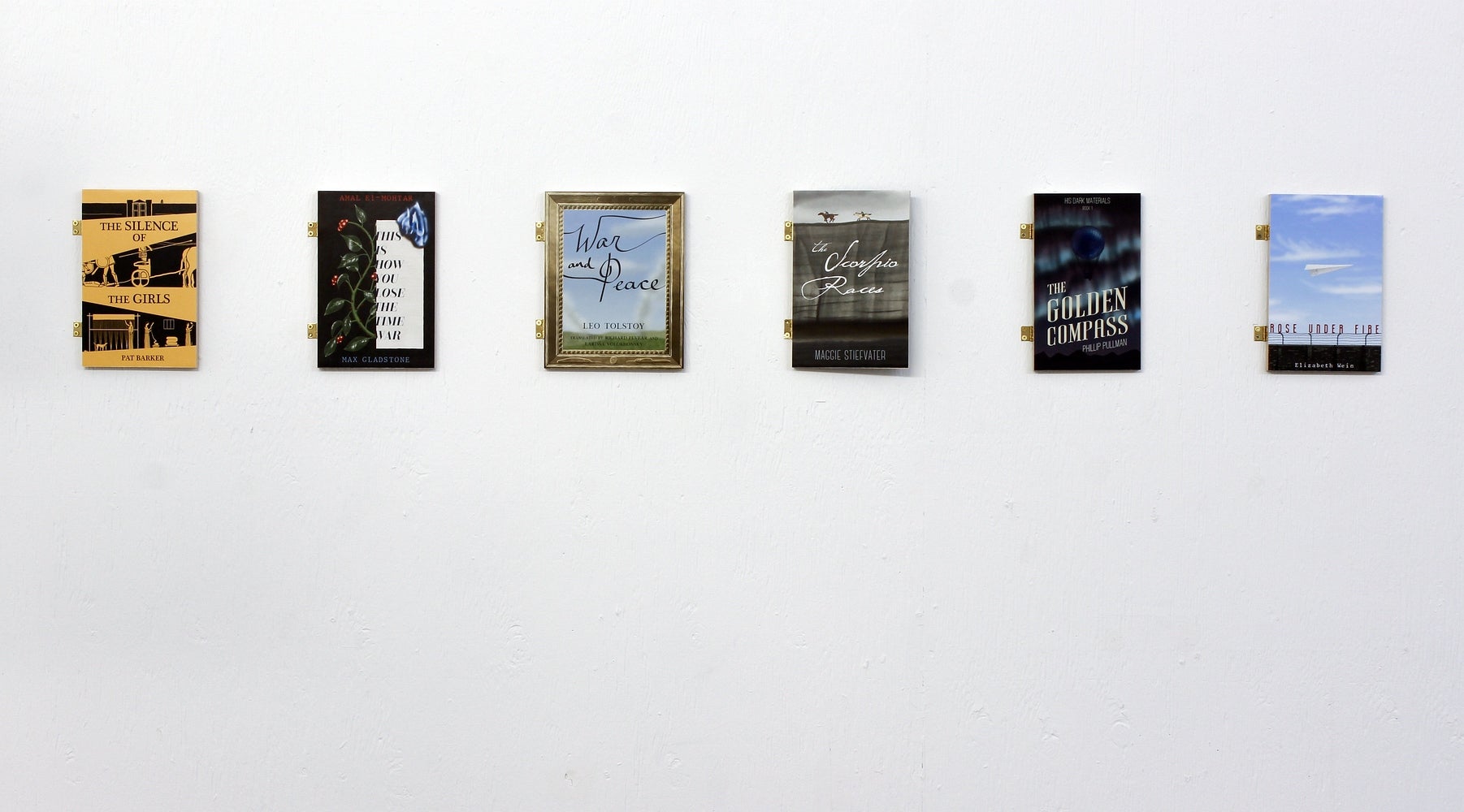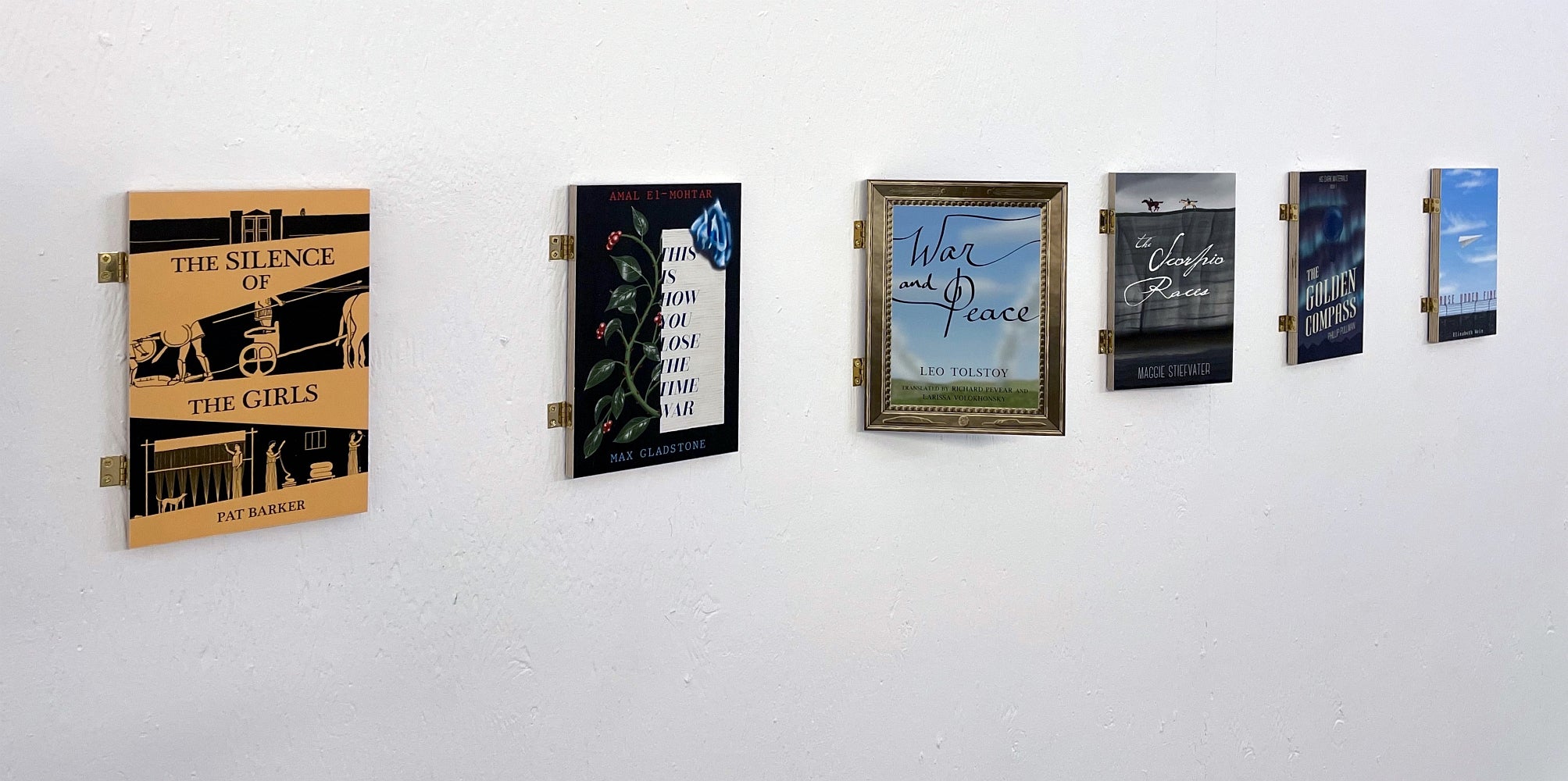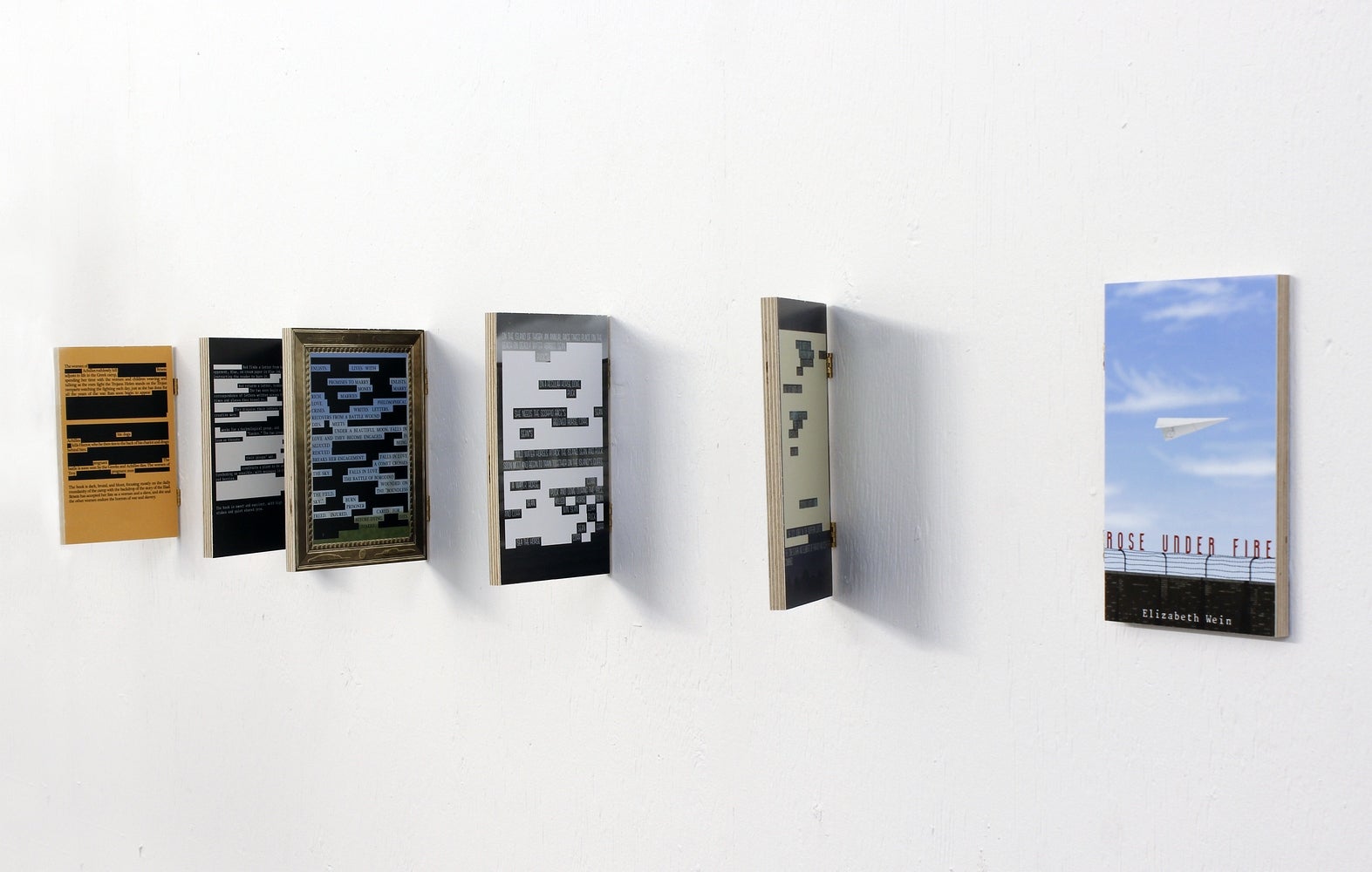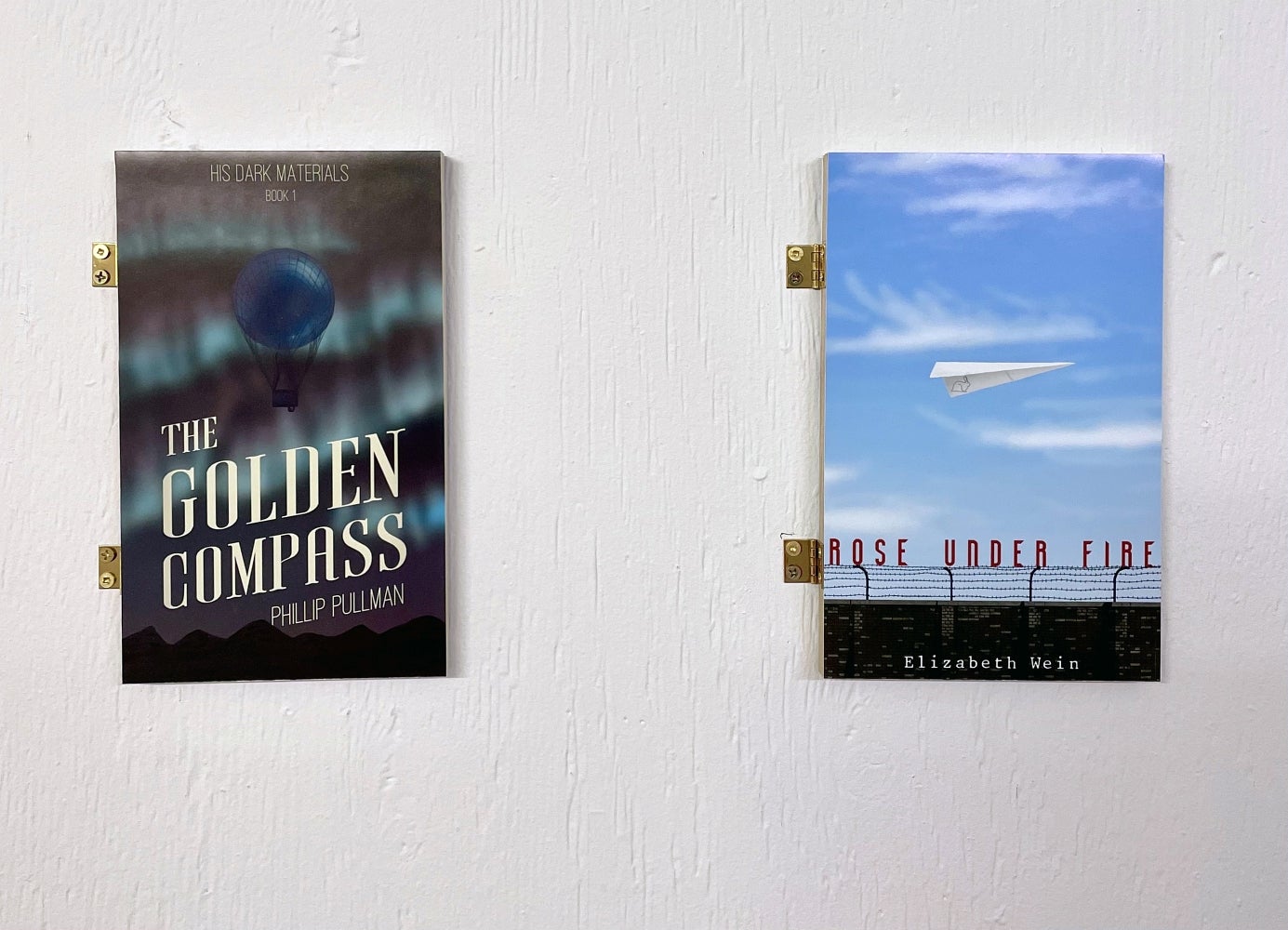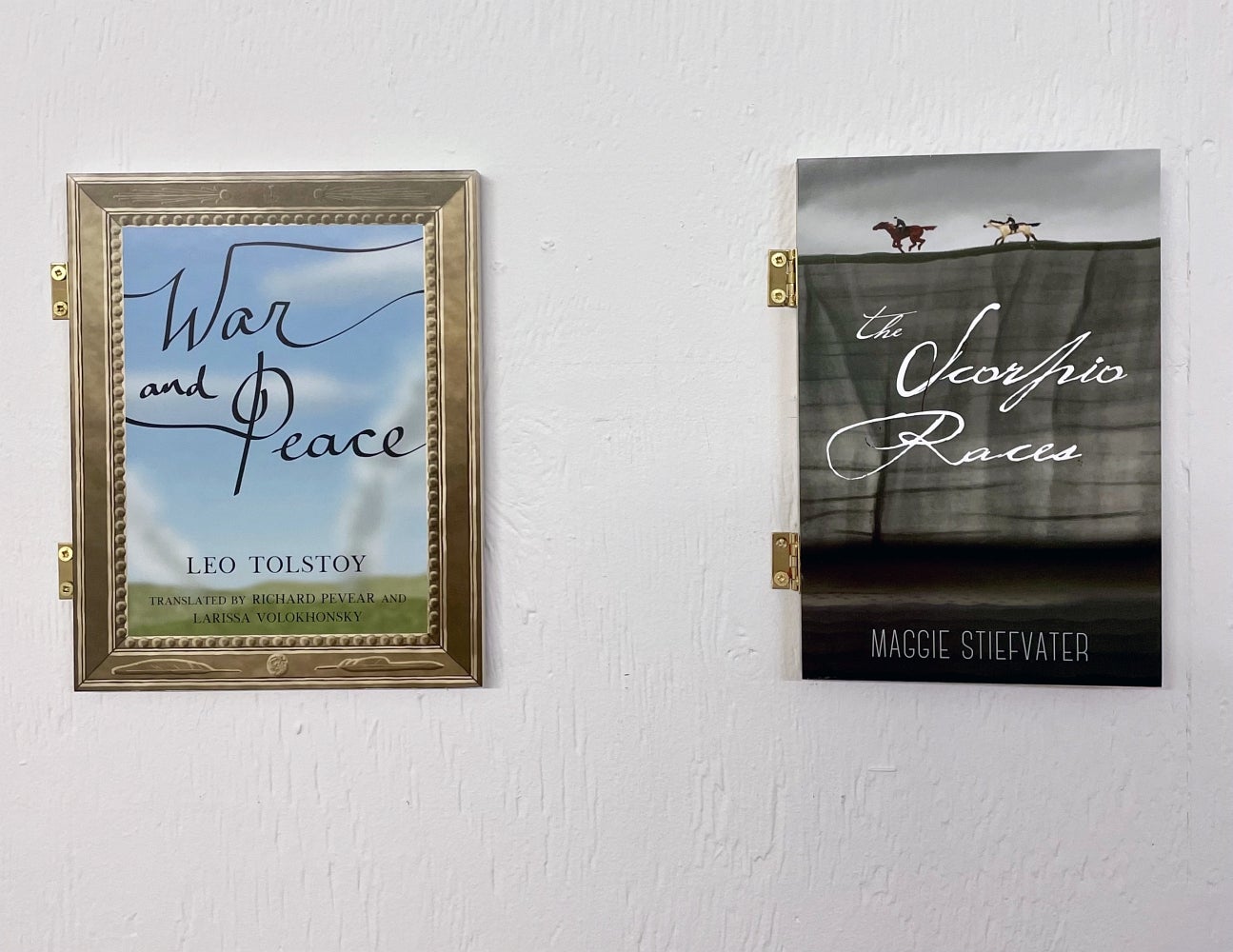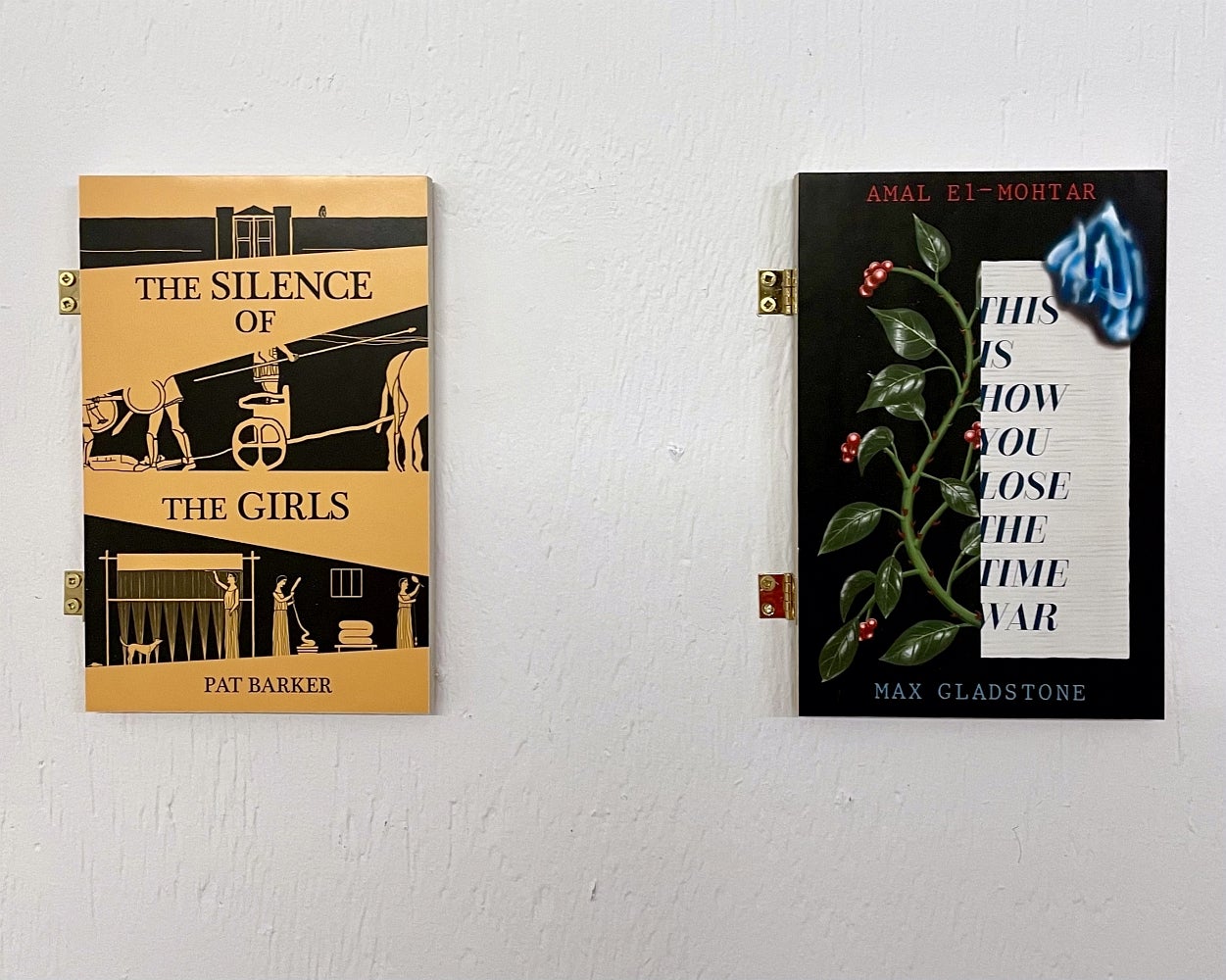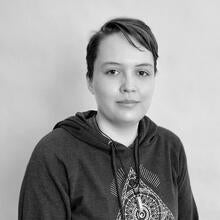
Email: zablehoux@uwaterloo.ca
Zoë is a fourth-year fine arts student at the University of Waterloo, originally from Kingston. They focus mainly on digital and textile arts, in which they are self-taught. They do just about every kind of textile art, and design and painting primarily with digital art. They enjoy integrating conceptual work with functional and aesthetic works, particularly to make invented book cover designs. Their works often focus on the themes of history, socio-politics, the purposes art serves, feminism, fashion, and the body.
Artist statement
Each piece I have made features a cover I have made for a novel and a corresponding “back cover” summary of the novel where everything is blacked out except for the parts included on the front cover design, or that can be inferred from it. Book covers use illustration, text, and graphic design tropes to communicate a great deal of information to the viewer: everything from genre, target age group, main themes, and tone, to specific details of the book. Most of these are achieved by adhering to popular trends for covers with ages and genres, and the rest use very literal representations of parts of the book. The covers I have designed are all very different in composition, tone, and style, so it is the accompanying text that unites the pieces as a body of work. These also serve to shift the focus of the covers from the ways they represent the books to the ways that design, illustration, and trends are used to subtly influence opinions of images we see. The focus in my work is on the impressions we form about book covers, but this certainly applies more broadly. Interestingly, the blacked-out text also shows how much is missing from a cover, showing the way that information is intentionally left out to prompt a viewer to read the book.
Interview Questions
What aspects of your life inspire your art?
I find myself inspired by stories and nature and everyday functional objects. I particularly enjoy reading fiction and that has opened me up to creating works both directly inspired by that and by the settings explored in it. The history of women’s art and its functionality combined with a focus on the aesthetic, often using nature motifs, also interests me greatly.
What are your preferred mediums and why are you drawn to them?
Given my interest in functional art and stories, I am somewhat inevitably drawn to textile art, especially historical clothing. I find this topic fascinating as it gives great insight to past lives, both in how people spent their time making the clothing, and how socio-politics affected the clothes.
On a very different note but also because of my interest in functional art and stories, I enjoy creating book cover designs. I love the way minimal visual shorthands and design tropes are used to create a piece of art that is pretty to look at, accurately represents the contents of the book, and is compelling enough to make someone interested in reading the book. This is what I have chosen to focus on in my exhibition.
Where do you see yourself in the future? How do you see your art practice evolving?
I plan on working in book design. I hope to see my design skills improve alongside my artistic skills, and especially to learn the technical ins-and-outs of the publishing industry. With time I imagine I will be able to better understand what helps sell books and how to keep my designs minimal and succinct. I will also absolutely continue to explore textiles since that is a great deal of fun.
What is the most significant thing you will take away from your Fine Arts studies?
I have absolutely expanded my technical abilities and enjoyed challenging them by experimenting with new techniques and mediums, but primarily I have learned to articulate my intentions and translate that clearly into the work I make. Critiquing has also helped greatly for me to be able to see how a piece can be improved and how it is most effective. I hope to use these skills to create works that speak easily and clearly to people.
